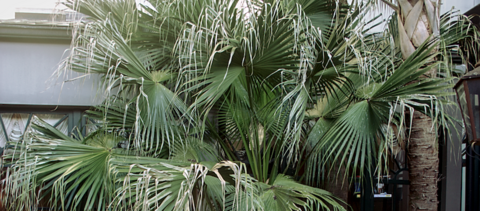P2828
Cold Injury to Palms
Download the PDF above for the complete publication.

Every few winters, arctic fronts plunge frigid temperatures into our state, harming landscape plants. Some of the plants most afflicted by the ravages of winter are palms that have been planted outside or near the edge of their cold adaptability. The amount of cold injury to a palm depends upon the type (or species), how well it has adapted to its landscape, the duration of the cold temperatures, and the location of plants or buildings around the palm that may offer some protection. Two kinds of cold injury are common in Mississippi: frost (or radiational freeze) and hard freeze damage. When selecting a palm for your landscape, choose a species that is well adapted to our Mississippi climate, not to central Florida’s climate. Also, try to buy locally. Trees raised here will more likely be adapted to our conditions than the trees transported from farther south.
If you must pick a cold-sensitive species, blocking our common winter winds is beneficial. Its chance of survival can be slightly improved if you plant the palm where it can be sheltered by buildings and other plants. This publication discusses cold injury in palms and offers guidance on prevention and care to help you protect these plants in Mississippi. References to more detailed publications are in the text. You can also contact state Extension specialists or your local Extension office for answers to specific questions.
The information given here is for educational purposes only. References to commercial products, trade names, or suppliers are made with the understanding that no endorsement is implied and that no discrimination against other products or suppliers is intended. Products, especially for residential use, change frequently. This information was accurate at the time of publication
Publication 2828 (POD-03-25)
Revised by Alan Henn, PhD, Extension Professor, Agricultural Science and Plant Protection, and Eddie Smith, PhD, Extension Agent IV, Pearl River County, from the original by Alan Henn, Eddie Smith, and Geoff Denny, PhD, former Assistant Extension Professor, Plant and Soil Sciences.
